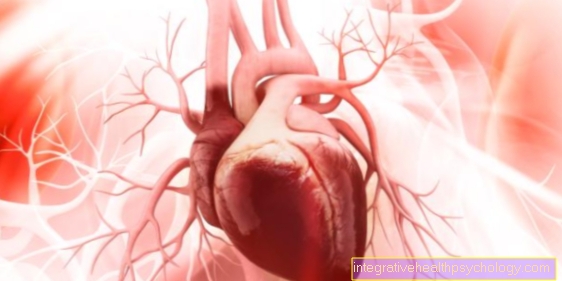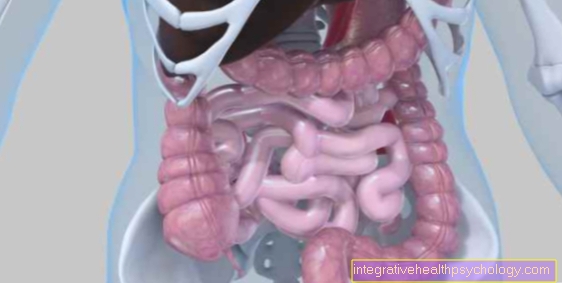Diabetic retinopathy
Diabetic retinopathy is a change in the retina that occurs over the years in diabetics. The vessels of the retina calcify, new vessels can form which grow into structures of the eye and thus seriously endanger vision. Bleeding also occurs in diabetic retinopathy.
Depending on the stage, deposits, new blood vessels or even retinal detachment and bleeding develop. Diabetes is seen as the cause. This disease is often responsible for blindness.

How common is diabetic retinopathy?
Diabetic retinopathy is often responsible for blindness.
It is actually the most common cause in people between the ages of 20 and 65.
The development is such that diabetic retinopathy occurs more and more often. This is simply due to the fact that the underlying disease diabetes is also becoming more common.

Figure eyeball
- Optic nerve (Optic nerve)
- Cornea
- lens
- anterior chamber
- Ciliary muscle
- Vitreous
- Retina (retina)
What types of diabetic retinopathy are there?
Forms of diabetic retinopathy:
- non-proliferative retinopathy
(proliferation: Reproduction / new formation, retina: retina)
Non-proliferative retinopathy is characterized by the fact that it is mainly restricted to the retina. There it comes to the smallest aneurysms, cotton wool herds, bleeding and retinal edema within the retina, which can usually be discovered by the doctor in a slit lamp examination. In the non-proliferative form, a distinction can be made between a mild, a moderate and a severe stage. The classification depends on the occurrence of different symptoms and lesions. The stage can be defined using the so-called "4-2-1" rule. Read below what is meant by this. - proliferative retinopathy
(proliferation: Reproduction / new formation, retina: retina)
The non-proliferative form of the disease progresses and proliferative retinopathy develops. Here new vessels form in the area of the exit point of the optic nerve from the eye and along the large vascular arches. If these vessels grow into the vitreous, they lead to the growth of connective tissue. This pulls the retina from its base.A retinal detachment occurs due to tension, which can lead to blindness. The retina is pulled away from its nourishing lower surface, the choroid. Bleeding may also occur, entering the vitreous humor, acutely impairing vision. Vision is generally compromised at this stage compared to the non-proliferative stage. - diabetic maculopathy
(Macula: Point of sharpest vision = yellow spot)
Furthermore, not only the periphery of the retina can be affected, but also the macula in the further course. In this form of diabetic retinopathy, there is a thickened retina at the point of sharpest vision (macula), lipid deposits and, above all, water retention in the area of the macula.
Read more on the subject below: Macular edema
What is the 4-2-1 rule?
The “4-2-1” rule plays an important role in determining the stage of non-proliferative retinopathy. This form of retinopathy is divided into mild, moderate, and severe. The severe form is defined by the occurrence of at least one of the following three lesions:
1. At least 20 microaneurysms per quadrant in all 4 quadrants.
2. Pearl-like veins in at least 2 quadrants.
3. Intraretinal microvascular abnormalities (IRMA) in at least 1 quadrant.
Thus, the “4-2-1” rule describes the number of quadrants that must be affected by the lesion for non-proliferative retinopathy to be classified into the severe form.
How to recognize diabetic retinopathy
What are the symptoms of diabetic retinopathy?
The further the diabetic retinopathy has progressed, the more the vision deteriorates.
Vision also depends on the type of disease (proliverative / non-proliferative). If there is an accumulation of fluid in the macula (Macular edema) before, vision is deteriorated. In any case, processes that take place in the macula (yellow spot) play
Lipid deposits (fat deposits) also interfere with vision. Patients experience blurred or distorted vision, or blind spots.
How is diabetic retinopathy diagnosed?
By mirroring the fundus of the eye, the ophthalmologist recognizes the changes in the retina. In order to have a better view of the eye, drops are administered that dilate the pupil. This is a good way of looking into the eye.
Another method for making a diagnosis is the so-called FAG (Fluorescence angiography). The patient is given a dye through the vein (no contrast agent), which is quickly distributed in the blood vessels of the body, including in the eye.
Photos of the vessels are taken at different stages so that one can see whether a vessel is dilated or leaking and dye is leaking out. The pupil must also be dilated for this examination.
Treating diabetic retinopathy
How is diabetic retinopathy treated?
The basis of the therapy is the successful treatment of the underlying disease diabetes mellitus. Blood pressure must also be well adjusted.
A medication diabetic retinopathy does not exist. However, there are drugs available to stop blood vessels from growing.
Using the Lasers vessels can be closed to prevent excessive growth. This treatment can be applied to an extensive area of the retina. As a rule, vision is not influenced too much, as enough areas remain intact. However, visual field restrictions can arise as side effects. Color vision and adaptation to darkness are also affected.
Another therapy is the Vitreous Removal It is mainly used for retinal detachments. The vessels that have grown into the vitreous humor attract connective tissue and this creates a pull on the retina. It can come to detachment.
In order to reattach the retina, not only must the vitreous be removed, but instead a gas or oil must be filled into the eye. Only such a filling ensures that the retina is pressed on and can grow together again.
Laser therapy
Laser treatment is particularly suitable for the proliferative and severe form of non-proliferative retinopathy. The laser application destroys undersupplied areas of the retina by means of coagulation, and this also reduces the growth stimulus for the formation of new vessels.
In the case of large lesions, the treatment is carried out on the entire retina and is therefore carried out in several sessions. The risks of laser treatment are impaired night vision and reduced visual field.
Preventing Diabetic Retinopathy
How can you prevent diabetic retinopathy?
In order to detect diabetic retinopathy at an early stage, regular check-ups by an ophthalmologist should be a priority in the case of known diabetes. As a patient, go to the ophthalmologist quickly in the event of changes or the development of vision problems. Most of the time, the changes in the retina have already progressed. Diabetes patients (diabetes mellitus) should therefore see a doctor before the vision problems occur. Simply commit yourself to one visit to the ophthalmologist per year and, if possible, don't skip any.
The prophylaxis depends on the type of diabetes present. Type 1 diabetics have to be checked annually from 5 years after the onset of their illness, and even every quarter after 10 years of diabetes. Type 2 diabetics (mostly older people) also need to be examined regularly - but at shorter intervals.
A kind of prophylaxis is the injection of antibodies against growth factors. These are intended to stop the growth of vessels and are applied directly into the eye.
- The risk of retinopathy can be significantly reduced by optimally setting the blood sugar and blood pressure. A permanent reduction in HbA1c below 7% and blood pressure to 140 / 80mmHg is recommended.
- In addition, obesity, elevated blood lipid levels and smoking should be reduced.
What causes diabetic retinopathy?
As the name suggests, the cause of diabetic retinopathy lies in the presence of the underlying disease diabetes. This damages the already small vessels in the eye.
This leads to early sclerosis (some kind of calcification) of the vessels, which can lead to vascular occlusions. If a vessel is closed, the retina can no longer be supplied with blood and can therefore no longer be nourished. The eye tries to compensate for this fact by stimulating increased vascular growth.
Those affected with diabetic retinopathy have blurred and blurred vision. Depending on which areas of the retina are affected, the symptoms vary in severity. Is the macula (yellow spot = the point of sharpest vision), there is a risk of blindness. The diagnosis is made by the ophthalmologist using a non-invasive fundus. In order to be able to say more precisely about the stage of the disease, a dye examination of the retina is usually necessary. Therapy is difficult. Newly grown vessels can be obliterated with a laser, but only if they are not in the macula (yellow spot) come to rest. If the retina is detached (see also our retinal detachment topic), it must be reattached by means of an operation (the laser is useless here !!!).
There is no drug therapy for diabetic retinopathy.
What are typical risk factors?
Typical risk factors for diabetic retinopathy are, as the name suggests, factors that are particularly common in diabetics.
- This includes, in particular, poorly controlled blood sugar that has been elevated for a long time. The sugar is deposited in large molecules in the vessel walls. There is damage to the small vessels in particular, a so-called microangiopathy, which mainly affects the retina.
- Further risks for the development of diabetic retinopathy are increased blood pressure (hypertension), smoking, increased blood lipid levels and hormonal changes during pregnancy.
Course of diabetic retinopathy
What is the course and prognosis of diabetic retinopathy?
Diabetic retinopathy remains without symptoms for a long time and is therefore recognized by the patient very late. In most cases, the disease is discovered incidentally by ophthalmological examinations as part of diabetic check-ups.
- Initial symptoms for both forms of retinopathy can appear Vision deterioration, blurred vision, or vitreous hemorrhage be.
- Retinopathy is a chronic and incurable disease which, if treated poorly or too late, inevitably leads to blindness, which entails enormous restrictions in everyday life. The dead nerve cells in the retina are destroyed and cannot be regenerated.
- In addition, numerous complications can occur with increasing retinopathy, such as increased intraocular pressure and retinal detachment.
Please also read: Green Star
Effective and early treatment can reduce the progression of the disease and possible complications. The most important treatment method, however, is the early prevention and reduction of possible risk factors.

-mit-skoliose.jpg)
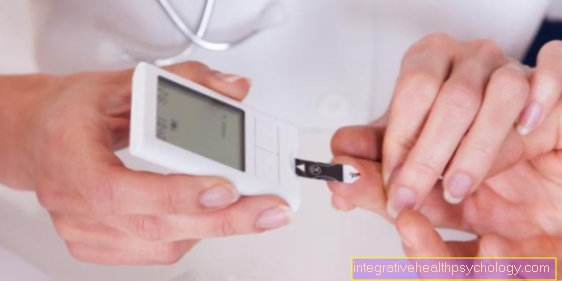
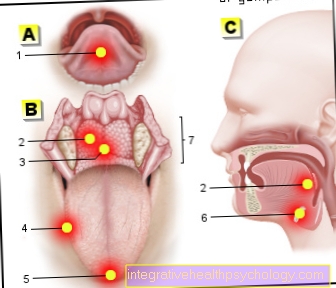
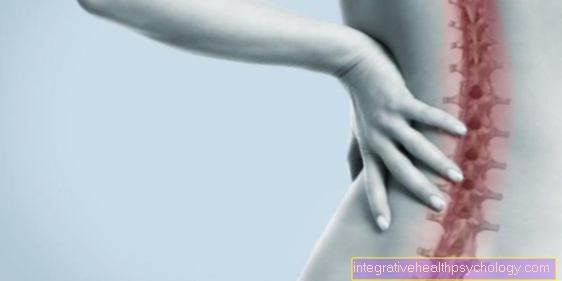

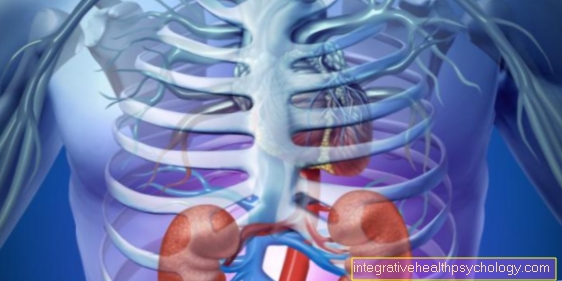

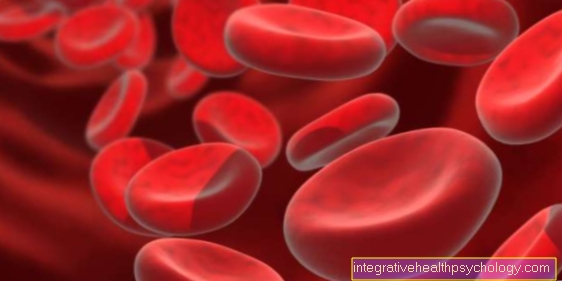

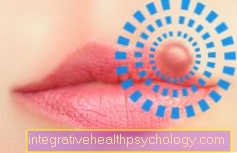



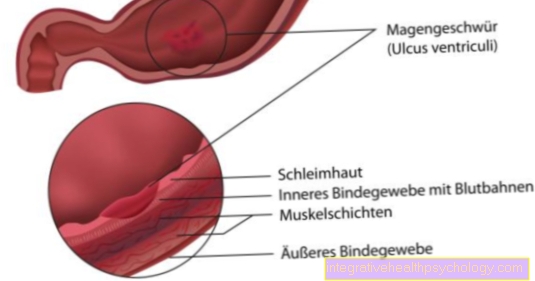
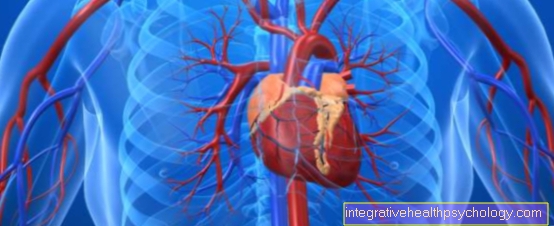
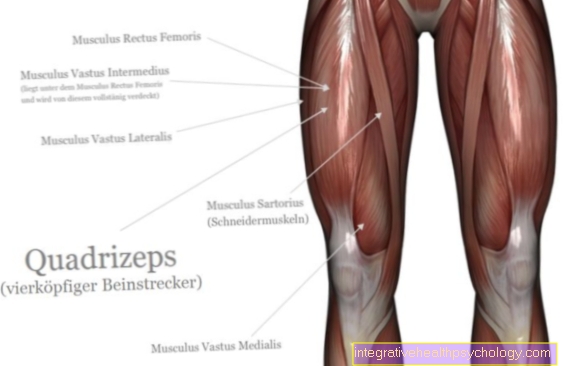






.jpg)

